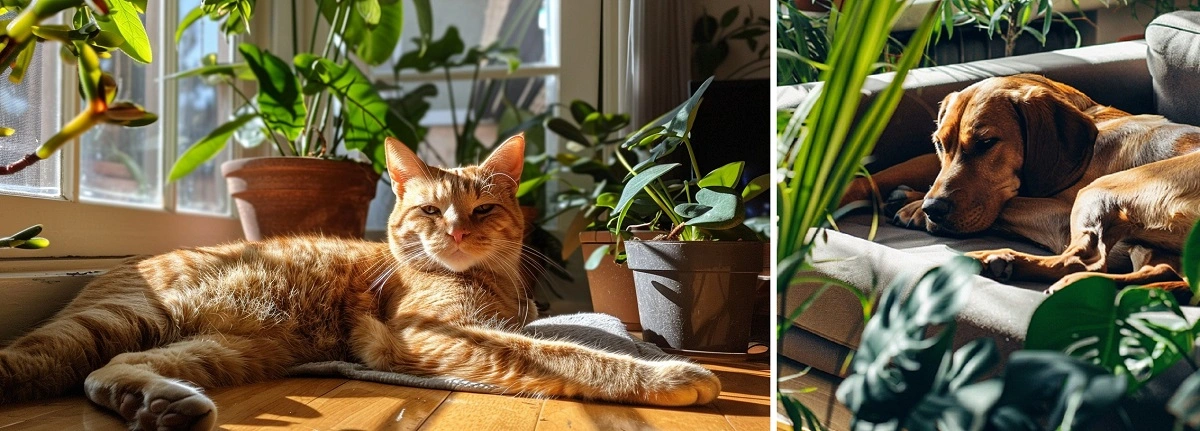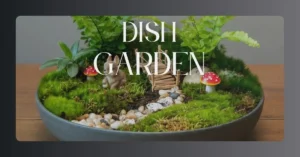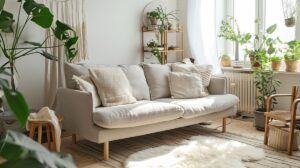Indoor plants are a great way to add style to your home, improve air quality, and create a peaceful atmosphere. But if you’re a pet owner, it’s important to choose pet-safe houseplants to protect your furry friends. Many indoor plants are toxic to pets like cats and dogs, which can lead to serious health risks if ingested. That’s why selecting non-toxic, pet-friendly plants is essential for a safe and happy home.
In this guide, we’ll see 10 pet-safe indoor plants that are not only beautiful but also perfect for homes with cats and dogs. Whether you’re new to indoor gardening or a seasoned plant lover, these houseplants are easy to care for, improve your home’s air quality, and brighten your space—all without posing a risk to your pets. Create a stylish, healthy, and pet-friendly home with these safe and stunning plant options!
Spider plant (Chlorophytum comosum)
Spider plants are one of the best indoor plants for homes with cats and dogs. Not only are they completely safe for pets, but they’re also incredibly easy to care for, making them a top choice for beginners. Their arching green and white-striped leaves bring a touch of elegance to any room, and they’re adaptable to various light conditions, thriving in bright indirect light but also tolerating dimmer spaces. On top of this, spider plants are natural air purifiers, helping to reduce indoor air pollutants and improve your home’s overall air quality.
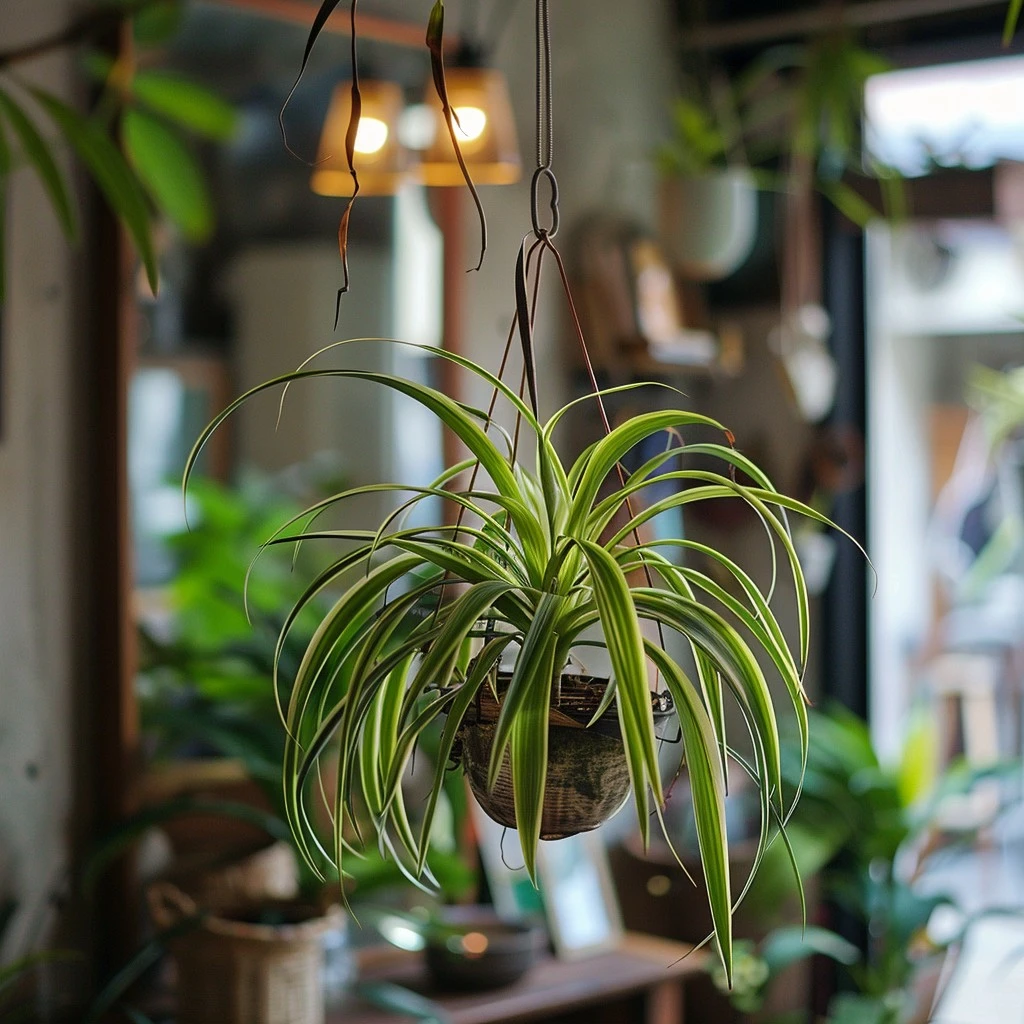
Care Tip: Let the soil dry out slightly between watering to avoid overwatering. Spider plants love moderate humidity, so consider misting them occasionally or keeping them near a humidifier. They look especially stunning in hanging baskets or cascading from elevated pots, adding depth and dimension to your décor.
Boston fern, Nephrolepis exaltata
Boston ferns are beloved for their feathery, vibrant green fronds that bring a lush, tropical feel to any indoor space. These ferns thrive in humid environments, making them perfect for kitchens, bathrooms, or any room. Best of all, they’re completely safe for cats and dogs, so you don’t have to worry about curious pets nibbling on the leaves or fronds. Boston ferns are also known for their air-purifying abilities, making them a healthy, functional addition to your home.
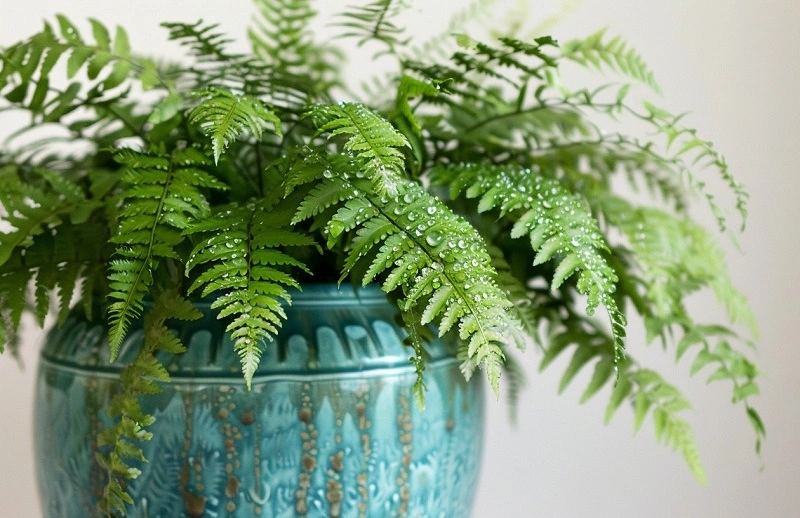
Care Tip: Keep the soil moist but not soggy, as Boston ferns prefer consistent moisture. Mist the leaves regularly. Use a humidifier to maintain the humidity they love, especially during winter months or in dry climates. With the right care, these ferns can become a statement piece in any room.
Parlor Palm (Chamaedorah elegans)
If you’re looking for a low-maintenance, pet-friendly plant, the parlor palm is a timeless favorite that fits the bill. Its graceful, arching fronds bring a tropical vibe to any room, instantly creating a relaxing and inviting atmosphere. Parlor palms thrive in low-light conditions. Making them an excellent choice for apartments, offices, or small indoor spaces where natural light is limited. They’re also slow-growing, so you won’t have to worry about constant repotting or trimming. It is safe for animals, grows easily under low illumination, and is easy to maintain. Furthermore, its lovely and arching fronds will definitely make your house seem tropical.
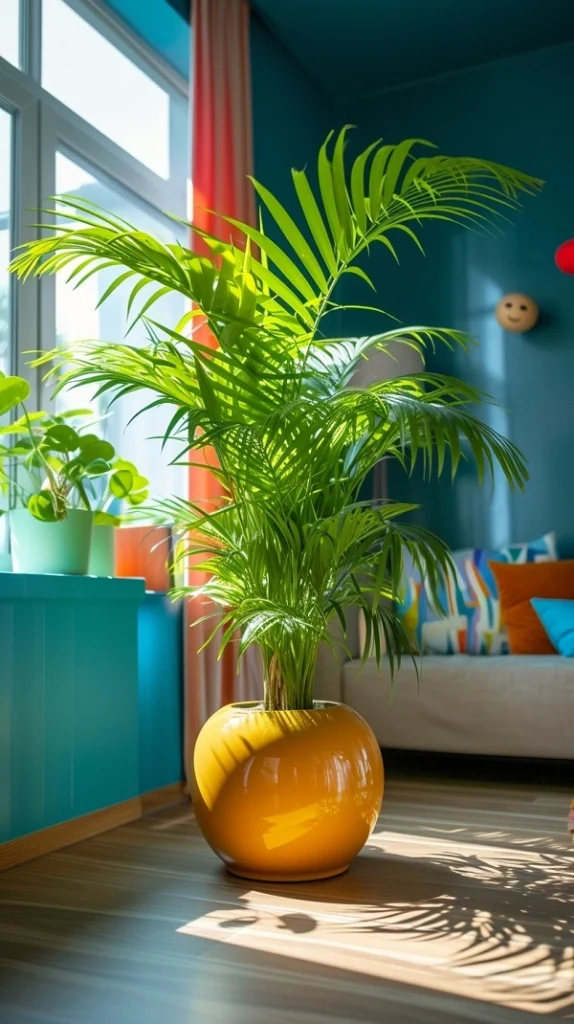
Care Tip: Water when the top inch of soil feels dry, and place it in filtered or indirect light for best results. Parlor palms are hardy and forgiving, making them perfect for anyone new to plant care. They’ll reward you with long-lasting beauty with minimal effort.
Saintpaulia, the African violet
For a pop of color in your home, African violets are an excellent choice. Their velvety leaves and stunning blooms in shades of purple, pink, and white make them a favorite among plant enthusiasts. Unlike many flowering plants, African violets are completely safe for pets. So your furry friends won’t be at risk if they decide to investigate or nibble on the leaves. These compact plants are perfect for small spaces, windowsills, or shelves, adding a cheerful burst of color wherever they’re placed.
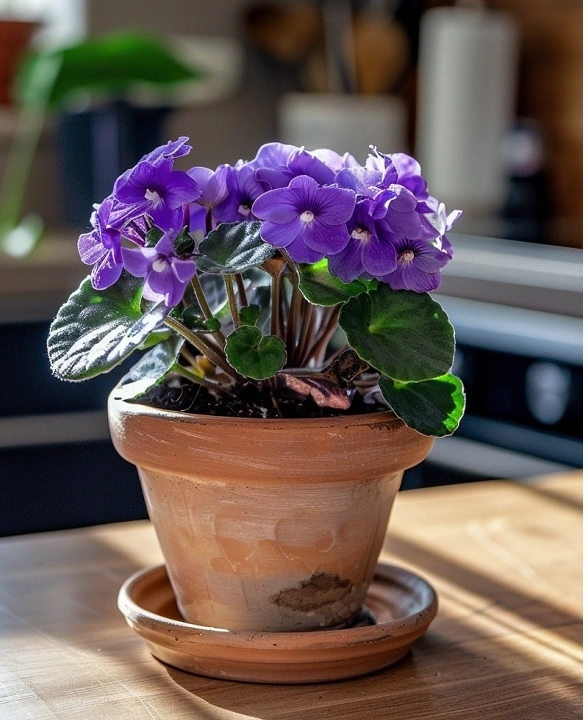
Care Tip: Water with room-temperature water to avoid damaging their delicate leaves, which are sensitive to temperature changes. Place African violets in bright, indirect sunlight, as too much direct light can scorch their leaves. They thrive with consistent care and will reward you with beautiful blooms throughout the year.
Schlumbergera, or Christmas Cactus
The Christmas cactus is a festive favorite during the holiday season. It produce beautiful blooms in shades of pink, red, or white. Unlike other holiday plants like poinsettias or mistletoe, which can be toxic to pets. The Christmas cactus is non-toxic and completely safe for both cats and dogs. This makes it a perfect choice for adding a festive touch to your home. And that too without worrying about your furry friends getting into trouble. Beyond the holidays, its unique, segmented stems make it a striking plant all year round.
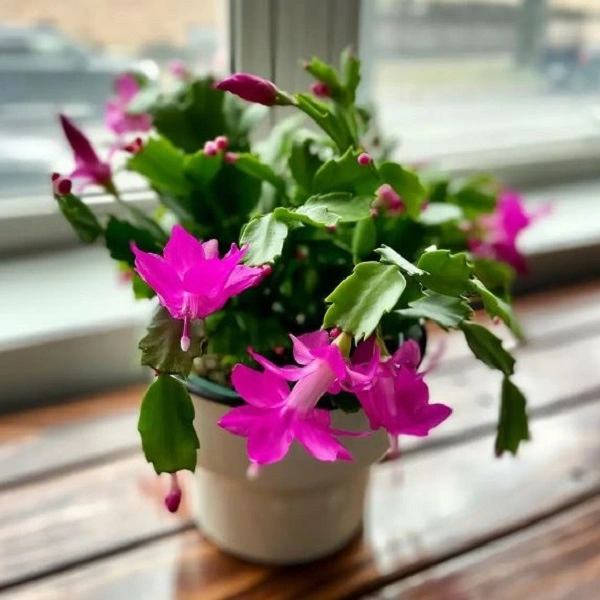
Care Tip: Place your Christmas cactus in bright, indirect light and water only when the soil feels dry. Be careful not to overwater, as this plant prefers well-drained soil. With minimal care, your Christmas cactus will reward you with vibrant blooms and distinctive beauty, season after season.
Areca Palm (Dysis lutescens)
The Areca Palm, also called the butterfly palm or golden cane palm, adds tropical beauty to your home decor. Its tall, slim trunks and arching fronds with vibrant green leaves create a peaceful, lush atmosphere. Perfect for any space, it works beautifully in your living room corner or as a lovely office centerpiece.
Even better, Areca Palms are completely safe for your furry friends, as they are non-toxic for cats and dogs. Plus, their low-maintenance nature means you can enjoy their elegance without tons of effort or stress. And as a bonus, they help purify the air, making your home healthier and fresher overall.
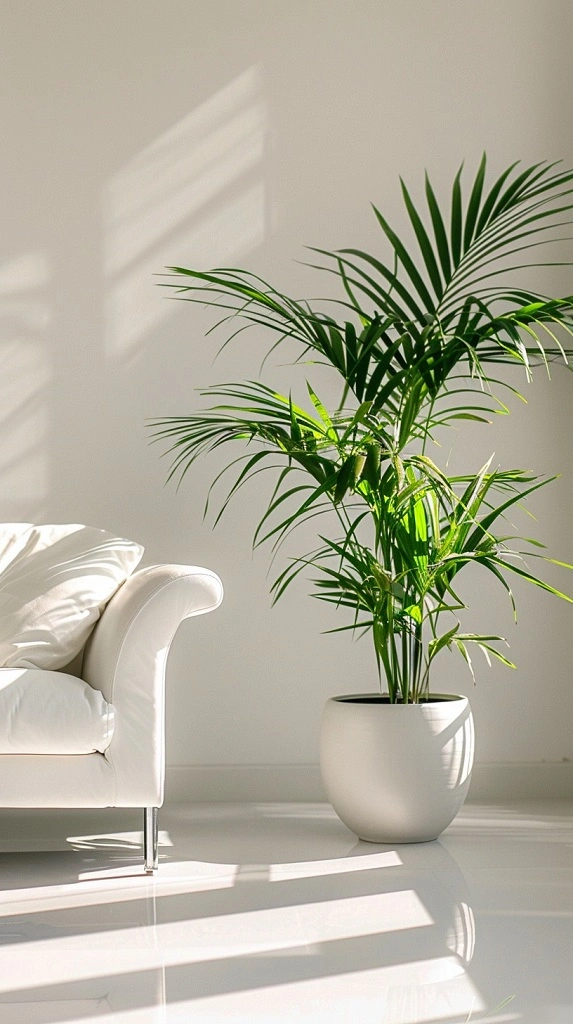
Care Tip: Water consistently to keep the soil slightly moist, but avoid overwatering to prevent root rot. Place the Areca Palm in a spot with bright, indirect sunlight to maintain its lush, vibrant appearance. Occasional misting can help mimic its natural humid environment. Also known as the butterfly palm isca palm is a Ideal Indoor Plants for Pet (pet-friendly) plant that may grow rather big and so appeals in any kind of area. It prefers frequent irrigation and indirect, brilliant sunlight.
Calathea
Calatheas are loved for their beautiful patterned leaves, which display stripes, spots, or a mix of vibrant colors. These pet-friendly plants are an easy way to add bright colors and stylish designs to your home. Plus, they are safe for your furry friends, making them a perfect addition for pet owners. Each evening, their leaves fold up in a charming “prayer” motion, giving your space a magical and lively touch.
Calatheas thrive in warm, humid rooms, which brings an inviting and tropical feel. Their unique leaves make them an excellent centerpiece for creating Instagram-worthy spaces, whether paired with simple furniture or boho-style decor. Additionally, their bright leaves instantly add personality and lighten up dimly lit areas of your home. With Calatheas, you can effortlessly enhance your home decor while adding warmth and dynamic energy to your space.
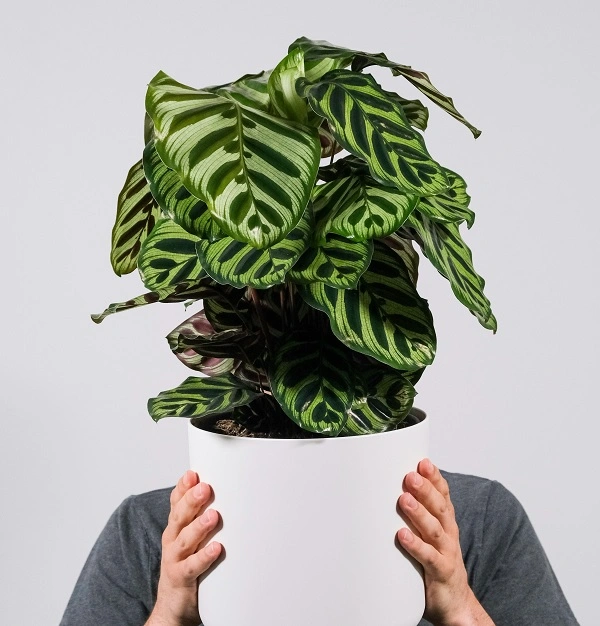
Care Tip: Keep the soil evenly moist but never soggy, and ensure the plant is away from direct sunlight, which can damage its intricate leaf patterns. For best results, place it in a room with bright, indirect light and higher humidity—bathrooms or kitchens are great options. Regular misting or a humidifier can keep the leaves looking their best.
Bamboo palm (Chamaedorea seifrizii)
The Bamboo Palm is a stunning and elegant plant that can transform any indoor space into a serene corner. Its tall stems and delicate, feathery leaves make it perfect for adding texture or dividing open rooms. This plant beautifully complements a wide range of decor styles, from modern to classic, blending effortlessly wherever it’s placed.
Pet owners often choose the Bamboo Palm because it’s completely safe for cats and dogs, eliminating toxicity concerns. Additionally, its incredible air-purifying qualities create a healthier home environment, lowering stress and promoting a calming atmosphere. Even with its striking appearance, the Bamboo Palm is surprisingly easy to maintain, making it a favorite for plant enthusiasts of all experience levels.

Care Tip: Keep the soil consistently moist but not soggy to avoid root rot. Place the Bamboo Palm in bright, indirect light for optimal growth, but it can also tolerate lower light conditions, making it a flexible choice for various spaces.
Peperomia (species spp.)
Peperomia plants are popular with indoor gardeners because of their unique leaf shapes, textures, and vibrant colors. From rippled to striped foliage, their leaves come in stunning shades of green and red, making them captivating. Due to their compact size, they fit well in smaller spaces like shelves, desks, or windowsills, adding greenery effortlessly.
These houseplants are not only stylish but also pet-friendly, which makes them an ideal choice for busy pet owners. They are incredibly low-maintenance, requiring minimal effort and thriving with basic care, so they’re perfect for beginners. Additionally, Peperomias grow slowly, meaning you won’t need to repot them often, saving you trouble.
With their ability to grow in different environments, they bring freshness and charm even to the smallest spaces in your home.

Care Tip: Allow the soil to dry out between waterings, as Peperomias prefer slightly dry conditions. Place them in medium to bright indirect light for best results, but they can also tolerate low-light environments, making them versatile for any room in your home.
Pilea involucrata: Friendship Plant
The Friendship Plant earns its name by being easy to grow and share with friends and loved ones. Its bright green leaves, adorned with a quilt-like texture, add a charming and cozy touch to any space. This compact plant fits perfectly in smaller areas or can enhance a larger indoor garden display.
If you have pets, there’s no need to worry—this plant is completely safe for cats and dogs, making it a thoughtful choice. It also thrives in low-light spaces, making it suitable for rooms without much sunlight. Additionally, its low-maintenance nature makes it perfect for busy individuals who want a worry-free yet lovely houseplant.
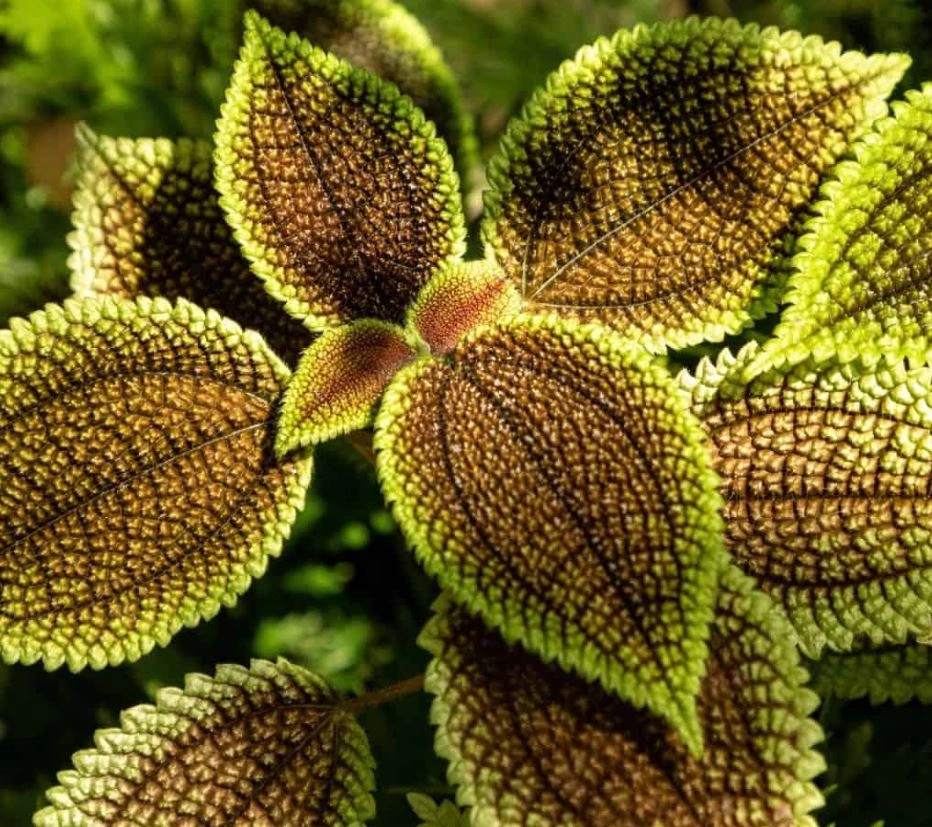
Care Tip: Keep the soil slightly moist, watering when the top inch starts to feel dry. Avoid placing the plant in direct sunlight, as this can cause the leaves to scorch or lose their vibrant color. For best results, place it in a spot with indirect light and moderate humidity. This is the ideal way to get some green into your house without thinking about the health of the pet.
Advice on Ensuring Pet Safety Near Plants:
As we finalized the Ideal Indoor Plants for Pets, lets also look at the safety about the pets:
- Placement: One should arrange plants in places far from your pets’ grasp. This includes tall cabinets and baskets that hang over the top of the ceiling.
- Barriers: Create physical barriers using materials such as gate for plants or nursery gates to stop animals from entering.
- Training: Through reinforcement techniques, you can train your pet to be free of particular objects or spaces.
- Repellents: Apply pet-friendly repellant on plants. Citrus smells, such can be problematic for dogs and cats alike.
- Alternative Plants: Give your pet safe, pet-friendly herbs to chew, including cat grass or catnip to cats.
- Supervision: Especially when your pet is known to be particularly curious or prone to chewing objects, keep a close check on their behavior while they are among plants.
- Read about toxic or poisonous plants here.
Innovations and Trends in Indoor Plants:
Certainly there are new innovation and the trends change in indoor plants which makes them Ideal Indoor Plants for Pets. Lets look at few new trends below:
- Smart Planters: The smart plants have sensors that monitor soil moisture, light level, temperature, and pH. They link your smartphone and offer live data along with reminders for irrigation and maintenance.
- Hydroponics and Aeroponics: For home gardeners, aeroponics and hydroponics methods for growing without soil are becoming more easily available. Hydroponics is the technique of growing plants using rich in nutrients water and airborne plants floating in the air to distribute the nutrients across the plants.
- Vertical Gardens: Perfect for little area, vertical gardens let plant life flourish either on walls or in stacked layers. This makes most use of available space and produces lovely green wall coverings.
- Grow Lights: High-end LED lights replicate actual sunshine. They can also be changed to give different plants the ideal spectrum of light. They help for year-round development and are energy efficient.
- Self-Watering Systems: Self-watering Systems are those mechanisms that guarantee plants have an equal access to water. They also lessens the possibility of either over or underwatering. Self-water planters make use of capillary motion. Other types incorporate built-in reservoirs.
- Sustainable Practices: Sustainability is becoming more and more important. As more individuals choose organic soils, biodegradable containers, and natural fertilizers.
- Air-Purifying Plants: The Air Purifying Plants: Snake plants and peace lily are especially sought-after since growing knowledge of indoor air quality plants with air purifying properties drives demand.
- Kokedama: Growing the plants within a ball of dirt then covered with moss is the Japanese technique known as kokedama. This is an amazing and unique approach of presenting vegetation. It can be set on a tray with a quite attractive design.
FAQs:
- Which pet-friendly indoor plants can be easy to care for?
A: Spider plants, Boston ferns Parlor palms, Christmas cacti are simple to take care of and are safe for pets. - How can I stop my pet from chewing on the plants I have in my home?
A:Place plants in areas that are difficult to reach or high Use barriers or use repellents that are pet-safe. - What indoor plants are safe for your pet and look gorgeous?
A:Plants such as the African violet, Christmas cactus as well as calathea’s are beautiful in their flowers and foliage while remaining pet-safe. - What tall, pet-friendly plants are suitable for large areas?
A:Bamboo palms and Areca palms get taller and are suitable for pets and pets, which is why they are great for large spaces. - How can I train my pet to keep away from indoor plants?
A:Utilize positive reinforcement for teaching pets to avoid plants or areas where plants are planted. - What pet-friendly plants can also aid in removing pollutants from the air?
A:Yes, plants such as areca spider plants and palms can not only improve the indoor air quality, but also provide protection for pet owners. - What do I do if the pet is eating plants?
A: Be aware of your pet’s unusual behavior. If you observe any signs you are concerned, call your veterinarian right as soon as you notice any signs. - What are the advantages of smart planters to pet owners?
A: Smart planters monitor your plant’s health and give instant updates to help you keep your plants in good health while also ensuring that your pets do not cause harm to them. - Can I use grow lights to grow pet-friendly indoor plants in areas with low light?
A: Yes, LED growth lights simulate sunlight and offer the ideal light source for plants to thrive all year even in pet-friendly environments. - What is a self-watering method that can help indoor plants as well as pets?
A: Self-watering systems offer constant moisture, which reduces the possibility of watering too much or not enough that can cause pets to be protected from dry-out or soiled plants.

